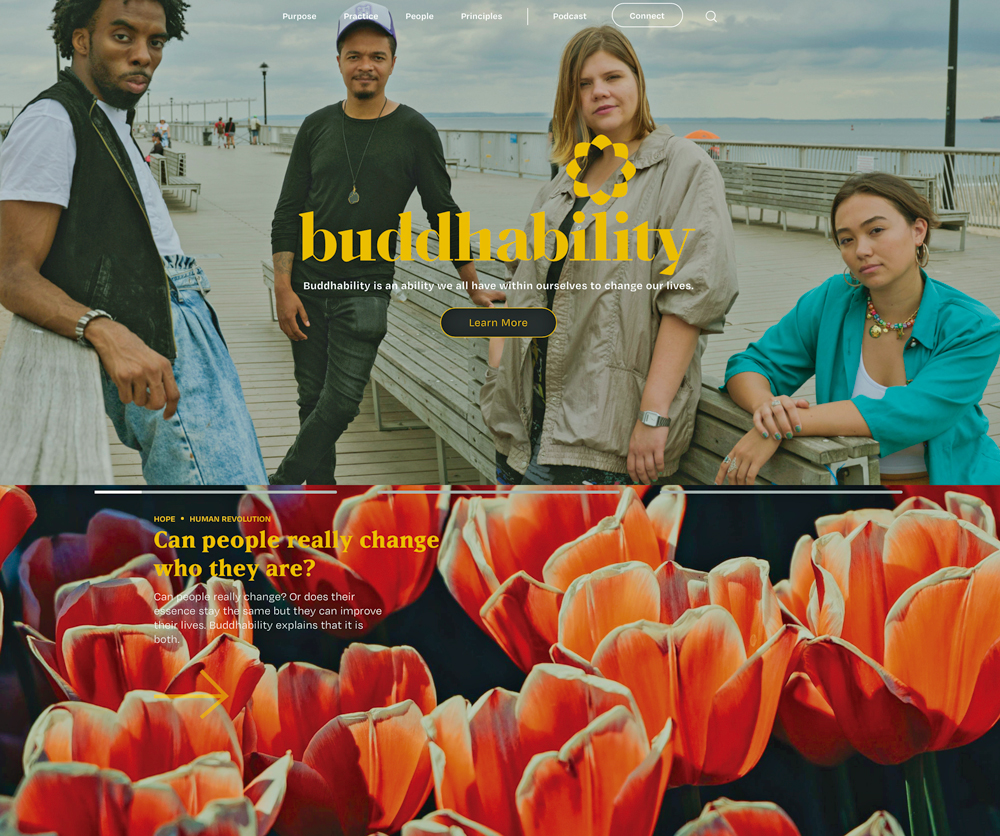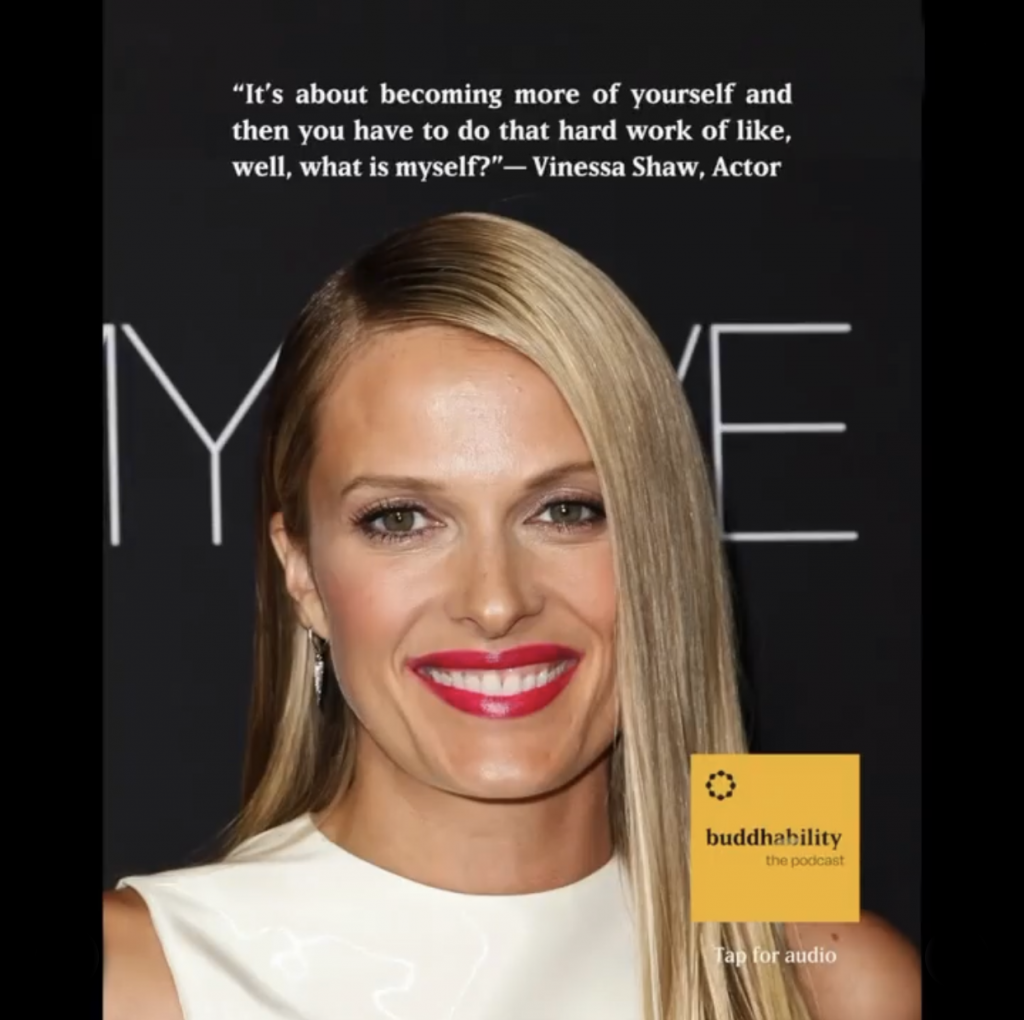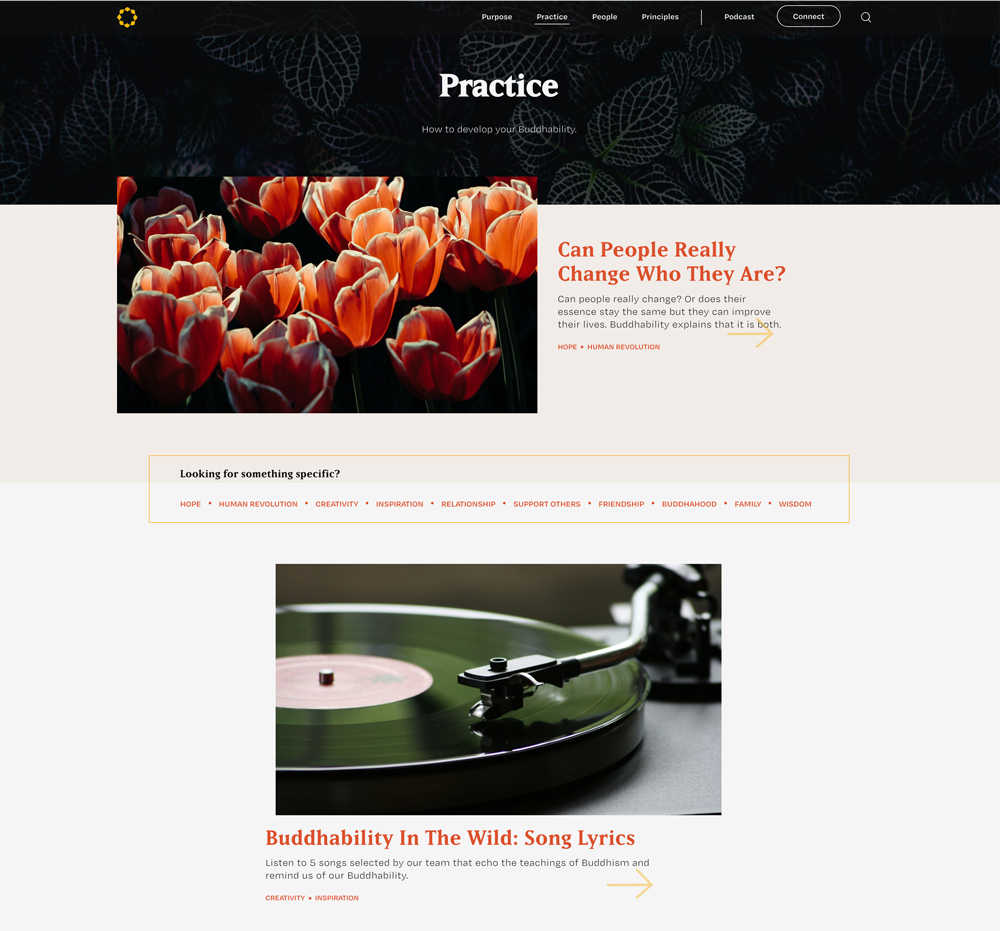U.S. Surgeon General Vivek Murthy wrote in a recent report on the youth mental health crisis: “Young people are bombarded with messages through the media and popular culture that erode their sense of self-worth—telling them they are not good-looking enough, popular enough, smart enough or rich enough.”[1]
In such a climate, the SGI-USA is sending a vastly different message to youth: “You have Buddhability.”
Thousands of young people have learned about Nichiren Buddhism through Buddhability, SGI-USA’s digital ecosystem for youth. Launched in October 2020, the website, podcast, video series and network of social media channels like Instagram, Twitter and TikTok all work together to communicate Ikeda Sensei’s philosophy of Buddhist humanism to young people and connect them to the SGI-USA Buddhist community.
The platform’s core message: Buddhability is an ability we all have within ourselves to change our lives and the world around us. Most importantly, it’s not a question of if we have Buddhability, but if we choose to believe it.
Here’s a brief look at Buddhability’s first 1 1/2 years:

Buddhability by the Numbers
Since its launch, the online ecosystem has expanded to:
425,000 podcast listens
590,000 website visits
24,000 Instagram followers
22,000 email newsletter subscribers


Buddhability has teamed up with SGI-USA members who are well-regarded in TV, film and music to spread its message of empowerment and encouragement. Artists such as Angelica Ross from Fox’s Pose; Nikolai Fraiture of the Grammy-Award winning band The Strokes; actor and TV host Fernanda Kelly; five-time Grammy-Award winning jazz star Esperanza Spalding; and actor Vinessa Shaw have all appeared on the podcast or promoted Buddhability on their social media accounts. Their stories are featured alongside those of youth who have applied Buddhism to overcome illness, navigated grief, found their dream job and forged a deep sense of purpose.

What draws youth to Buddhability? Popular podcast episodes and articles cover topics such as anxiety, loneliness, imposter syndrome, overcoming negative self-talk and how to truly care for ourselves and others. In other words, Buddhability attempts to meet youth where they are, speaking to them about how Buddhist wisdom can empower them to overcome real-life problems amid these complex and turbulent times.

The platform also has found fun ways to make the practice of chanting Nam-myoho-renge-kyo a part of young people’s daily lives. In February 2021, the “Buddhability Journey” was launched to challenge new users to try chanting for 28 consecutive days. Participants were sent daily newsletters, phone wallpapers, audio prompts and special videos and articles to encourage them in their first days of chanting.
780: The number of people who have asked to be connected to a local SGI-USA district through Buddhability since last year. Some of whom have become practicing Hope Champions and full-fledged SGI-USA members.
We have the ability within to grab hold of our own happiness and change the world around us. In the coming year and beyond, Buddhablity will continue to spread this message and inspire a new generation of youth to change the current of the times.
—Prepared by the Buddhability staff
My First Year Chanting
Jihii Jolly: Today we’re talking with Nikolas Spayne, of Chicago, who started chanting Nam-myoho-renge-kyo at the beginning of last year when he remembered having heard about Buddhism and decided to look it up. Like many of us, the stress of the pandemic, the constant stream of negative news and big questions about his own life and future made him wish he could find a fresh path forward.
Eventually, he started practicing Buddhism, and today he walks us through exactly what that journey looked like.

Nikolas Spayne: I was first introduced to this Buddhism six or seven years ago. It was a very brief introduction. Fast forward to the beginning of last year, 2021. And the best way I could describe it was just that I was feeling really stuck. We were entering the second year of the pandemic, and everywhere I looked just in the news, there seemed to be just so much devastation and suffering.
So a thought just popped into my head: I wonder what that Buddhist guy [I] met six years ago is up to? I was like: “Wow. Some peace and happiness sounds good right now.”
So, I initially wondered if the SGI had any podcasts I could listen to since I really love podcasts, and sure enough, I typed it in, and Buddhability popped up, and I devoured all the podcasts. This was such a huge reason of why I started practicing. And it was a great introduction to the practice for me. So I listened to the podcast and was so inspired with each episode. And then I went to the online SGI bookstore, and I started reading introductory books. And then started chanting Nam-myoho-renge-kyo in the morning and started receiving a lot of benefit from that in my life.
Jihii: What happened once you started chanting? You said you started experiencing benefits. What changed such that you decided to actually continue?
Nikolas: The biggest thing that I noticed initially was that after I chanted, my racing thoughts started to slow down, and I just felt much more present. I felt calm.
In this Buddhism, there’s this concept of winning in the morning. That’s one of the ideas that really stuck out to me. My mornings were a mess. Alarm goes off, snooze button three times, I’m running late. I’m waking up stressed. So, the biggest thing that I noticed when I started chanting in the morning, my mornings started to improve. I notice myself waking up on time and I’m committing myself to [chanting] even 5, 10 minutes at a time.
I really noticed it when my partner one morning, unprompted, was like: “You’re different. There’s something different about you in the morning.”
That was the biggest benefit that I noticed right away.
Find the full episode on buddhability.com and all major podcast platforms
References
- https://www.nytimes.com/2021/12/07/science/pandemic-adolescents-depression-anxiety.html?searchResultPosition=5 <accessed on May 11, 2022>. ↩︎
You are reading {{ meterCount }} of {{ meterMax }} free premium articles

